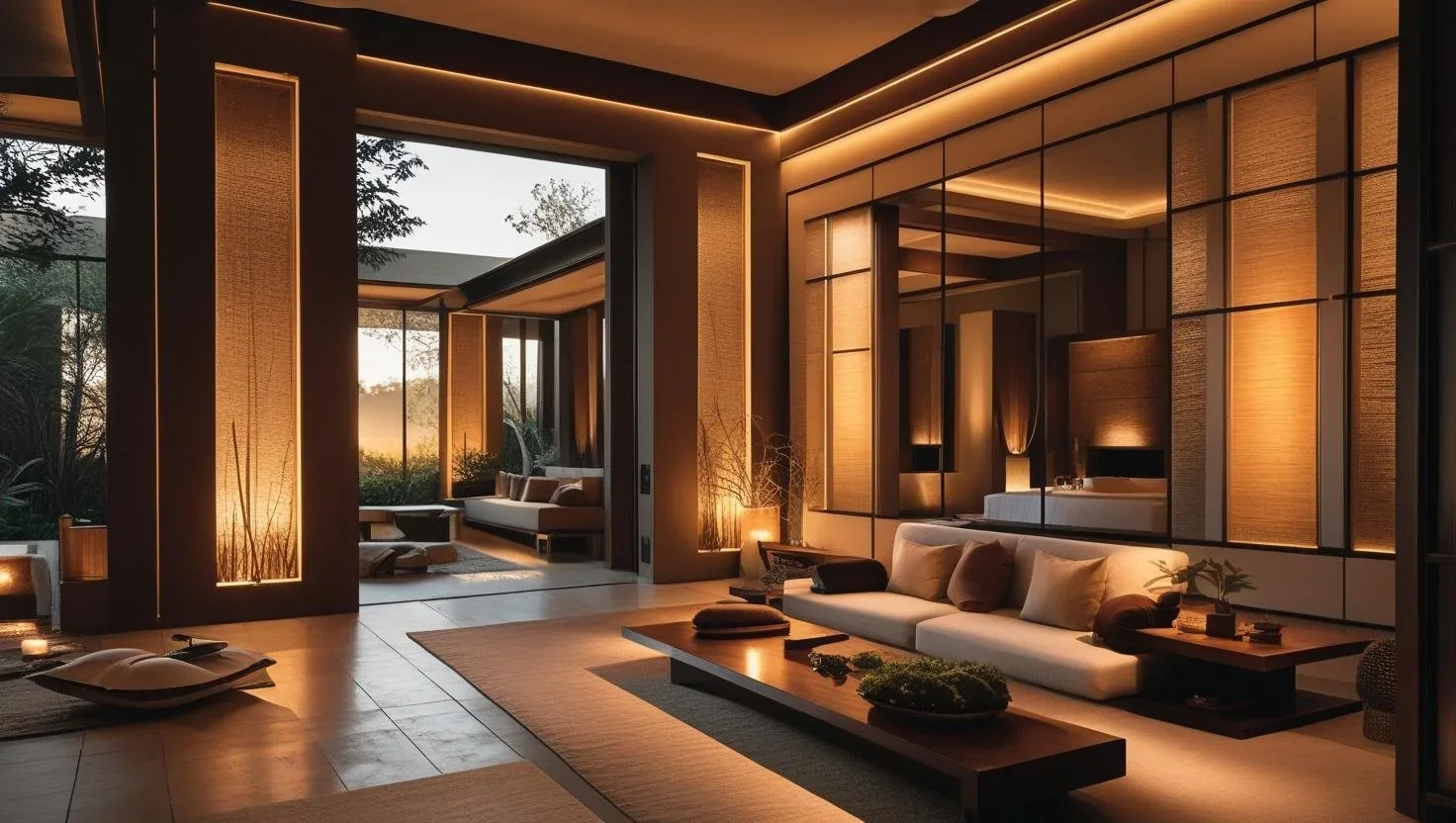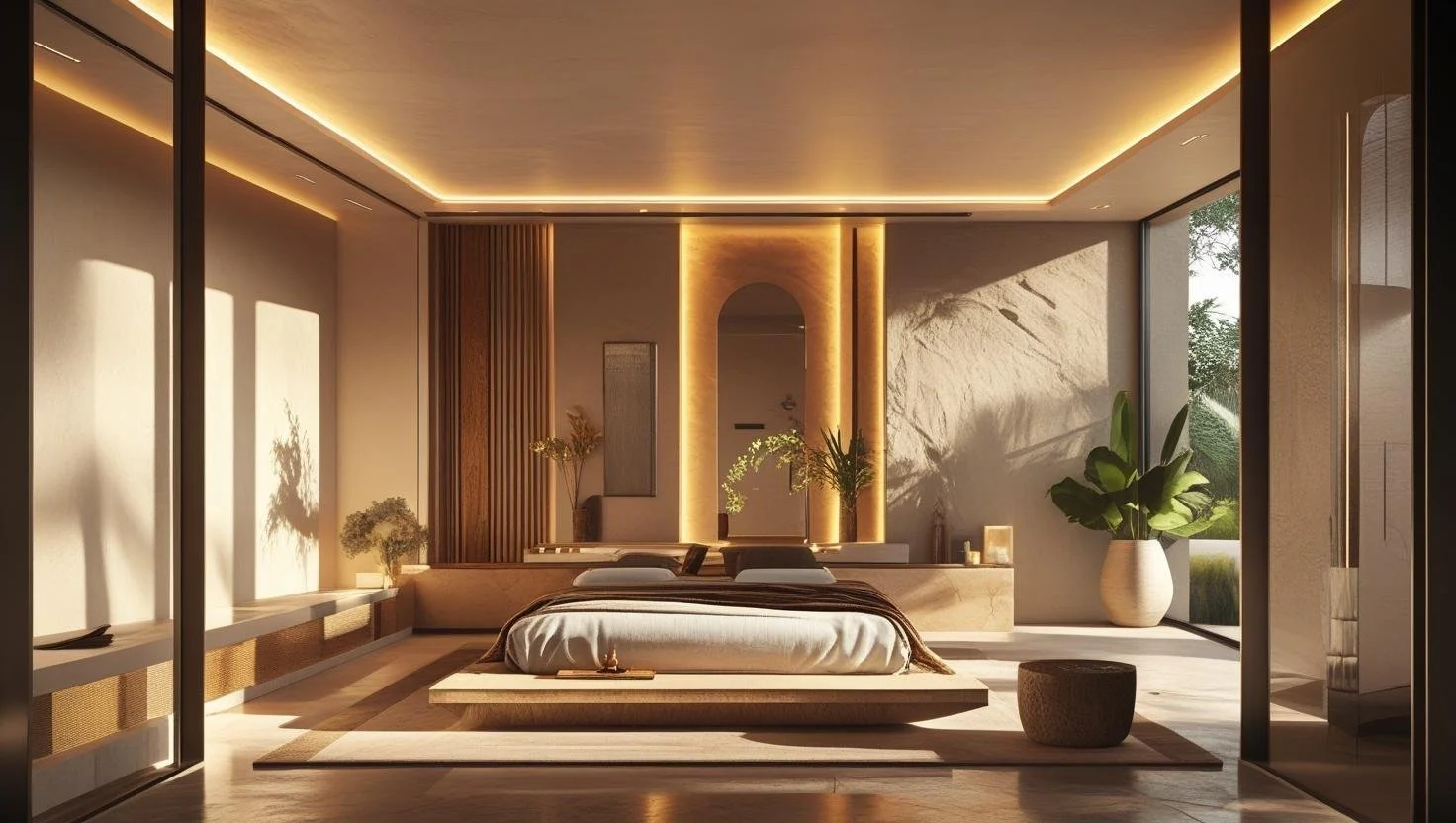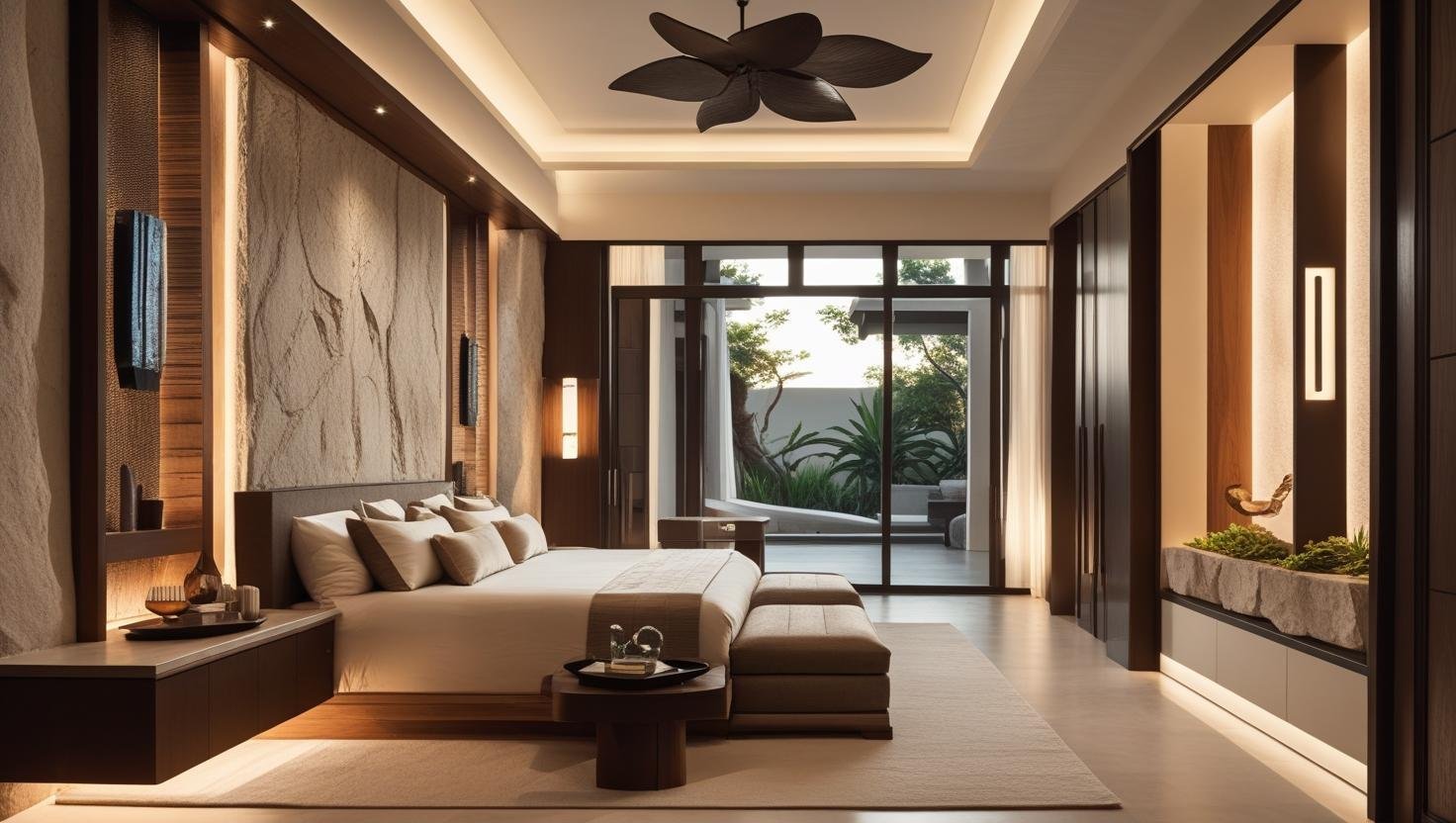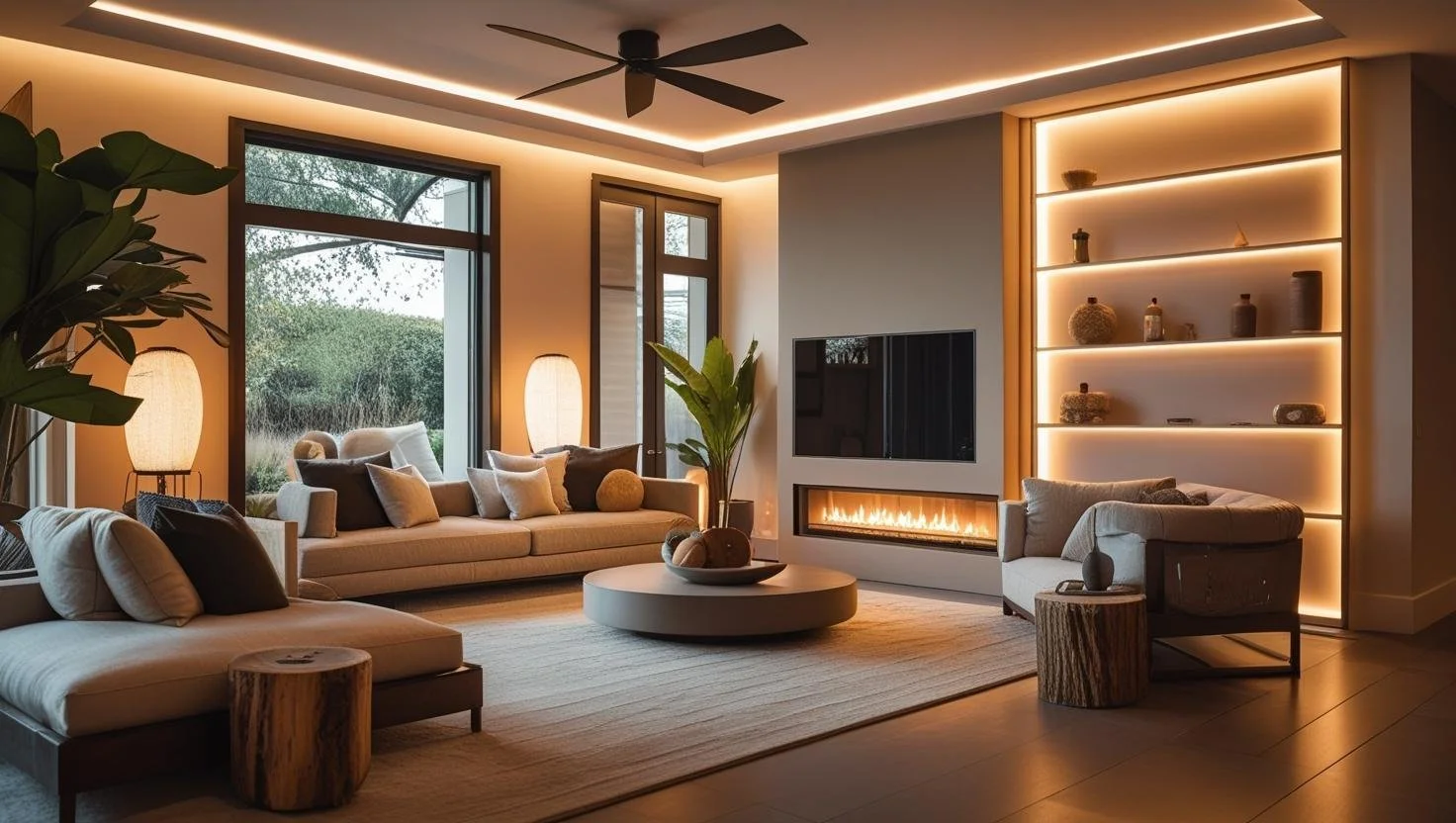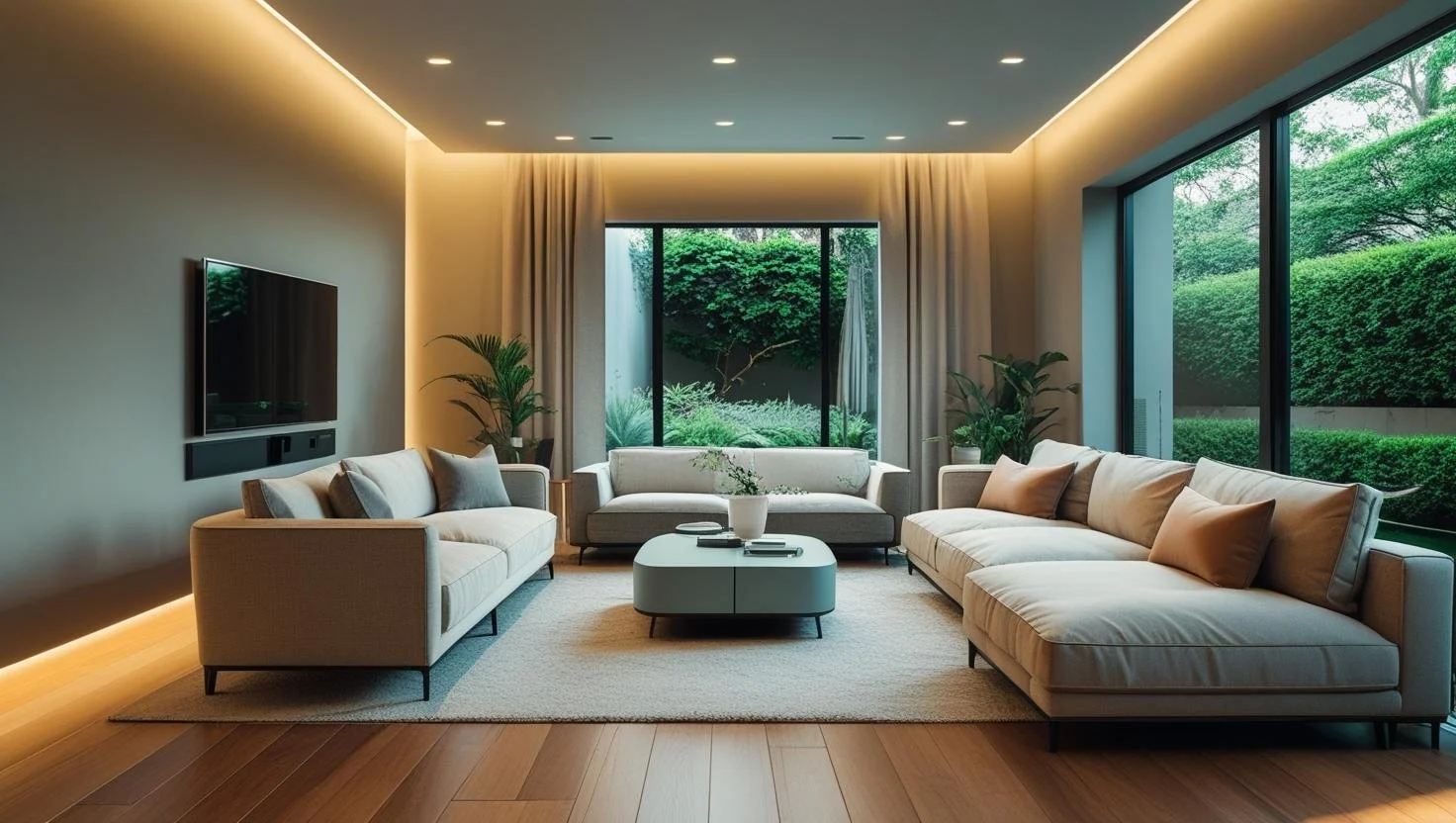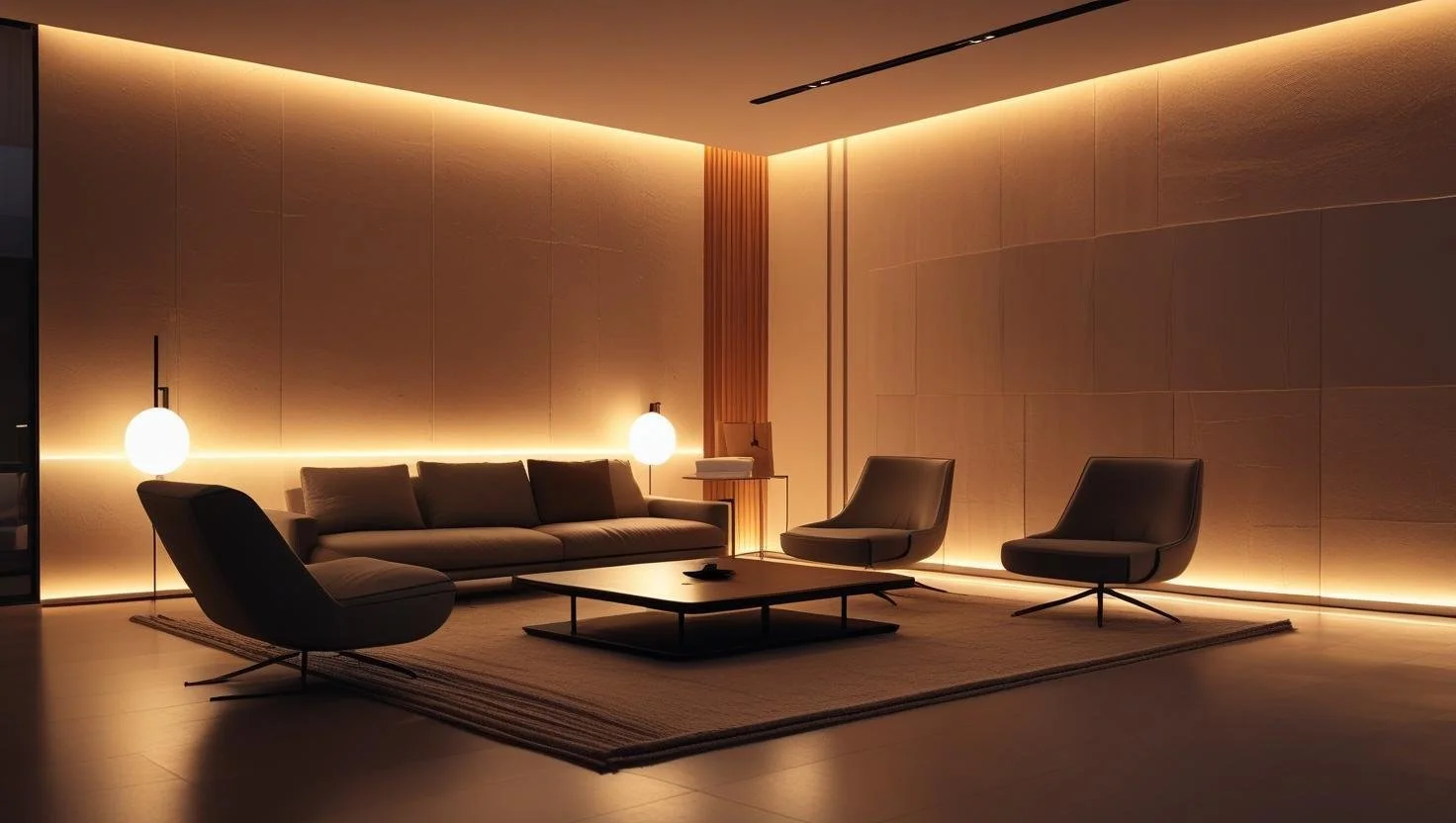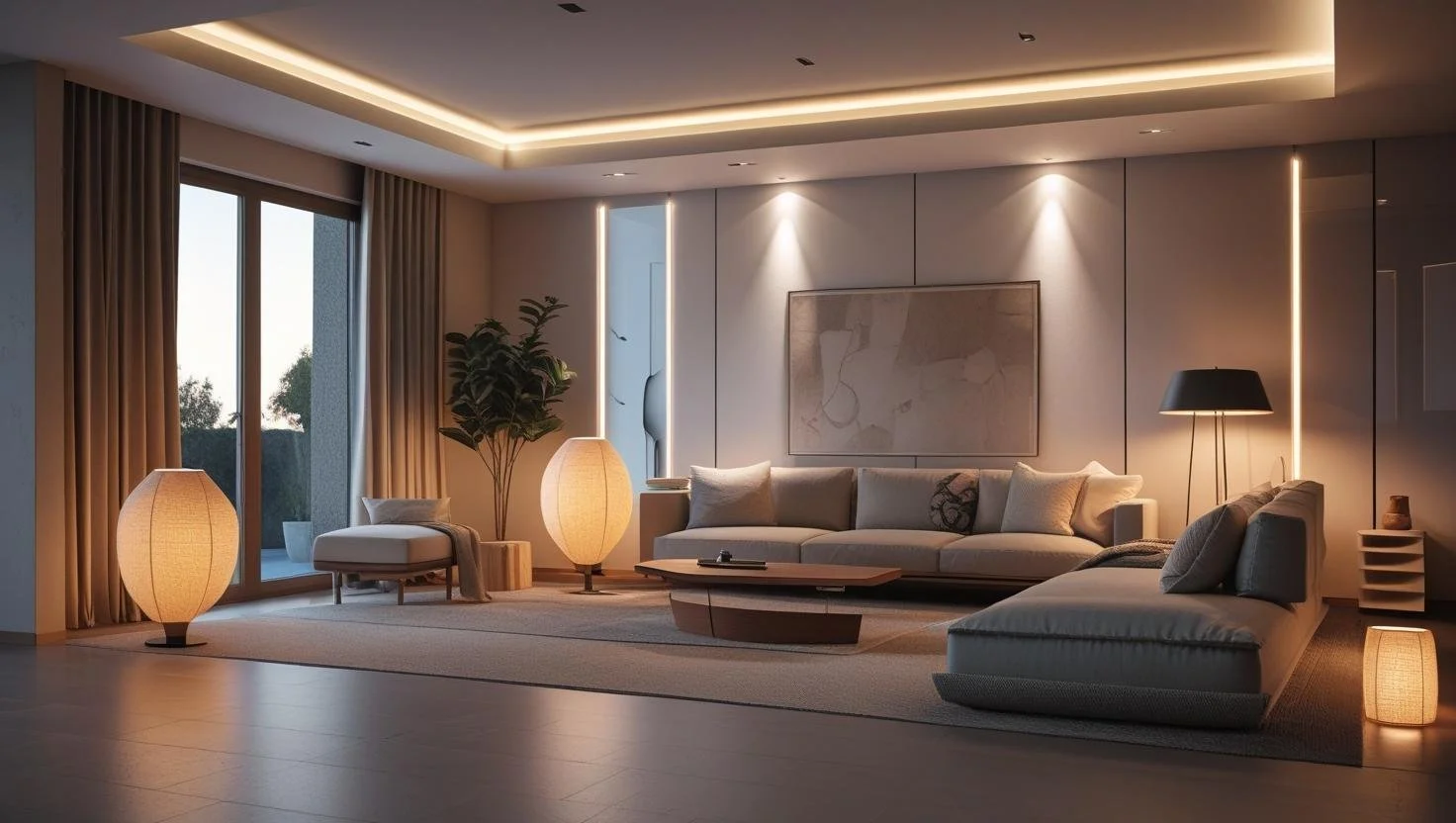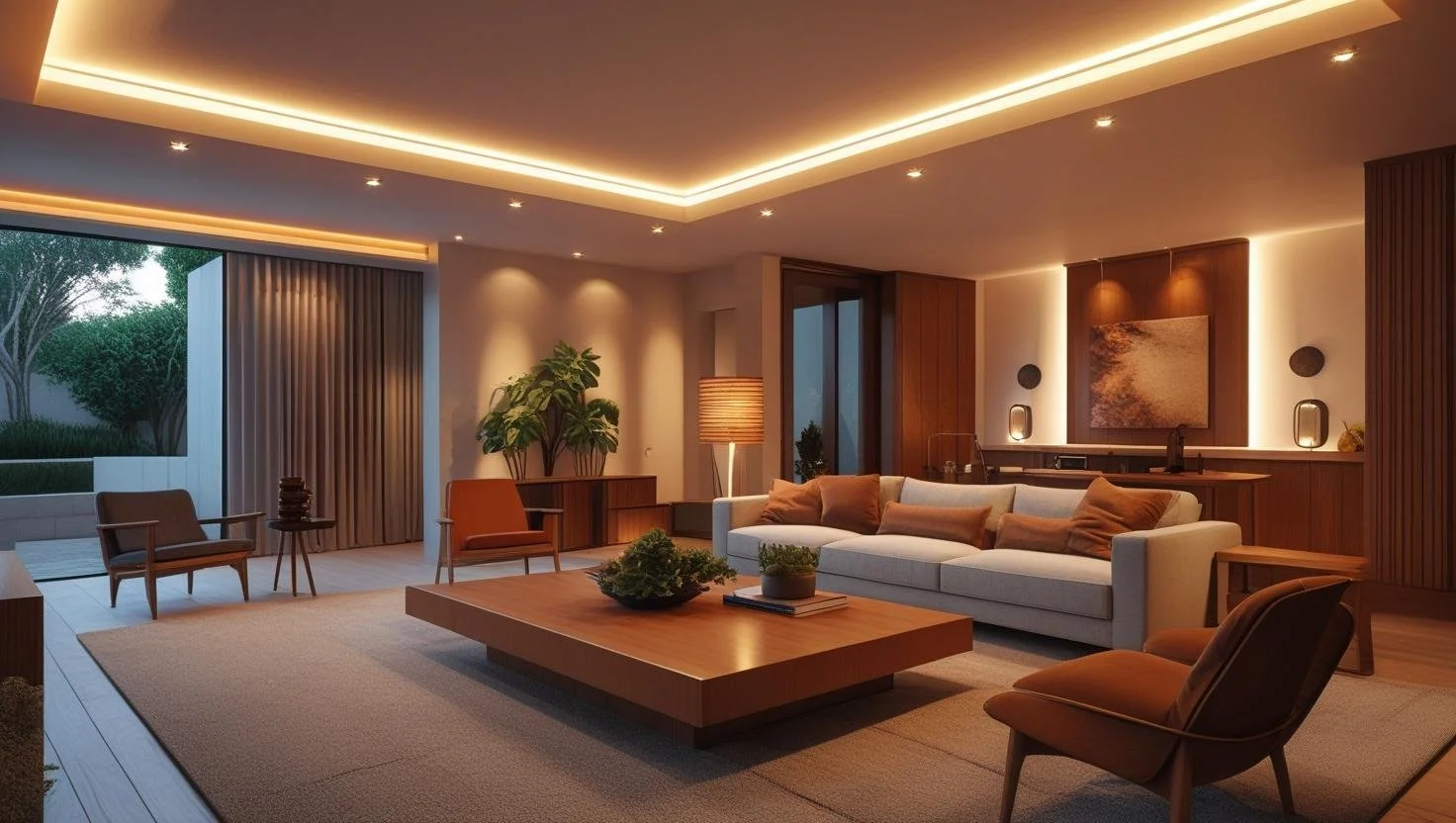Transform Your Austin Home into a Luxurious Oasis with Ketra Human-Centric Lighting & Smart Control
Don’t Feel like reading our blog? No Worries we made a video!
Imagine coming home to a space that feels as inviting as a sun kissed sanctuary. Many homeowners struggle with creating a harmonious atmosphere that balances functionality and luxury. This post will explore human-centric lighting solutions that enhance well-being, delve into various lighting styles, and discuss how a smart home system can transform your environment. By reading on, you will learn how to optimize home lighting to foster comfort, boost mood, and elevate your entertainment experience, ultimately turning your residence into a luxurious oasis.
Understanding Human-Centric Lighting Solutions
Human-centric lighting focuses on enhancing well-being through thoughtful LED lighting design that aligns with the body's natural rhythm. Tunable lighting systems adjust illumination to create optimal environments, while integrating shading elements supports comfort and ambiance. Assessing astrological time can further promote wellness by harmonizing the home with natural cycles, essential in any home theater installation.
Transform your space with smart tech and design – start with a clear budget. Prioritize your must-haves and create the connected home you’ve always wanted!
Defining Human-Centric Lighting in Modern Design
Human-centric lighting in modern design prioritizes the well-being and happiness of individuals within their homes. This approach enhances natural beauty and optimizes room environments by aligning lighting with the body's circadian rhythms. For example, using tunable LED systems allows homeowners to adjust brightness and color temperatures throughout the day, positively influencing mood and energy levels through stimulating the brain's responses to light.
The Role of Tunable Lighting in Home Environments
Tunable lighting plays a significant role in home environments, as it can dramatically influence sleep patterns and overall well-being. By adjusting light levels and color temperatures, homeowners can create a space that supports restful nights and energizing days. For instance, warmer tones in the evening signal the body to prepare for sleep, while cooler hues during the day enhance alertness and concentration, particularly beneficial for learning environments.
Integrating Astrological Time for Optimal Wellness
Integrating astrological time into home lighting systems offers a unique approach to aligning light with the body's circadian rhythm, enhancing overall wellness. By using dimmers that synchronize with natural cycles, homeowners can optimize their environment for relaxation or productivity based on the time of day. This level of customization is particularly beneficial in settings like a custom home theater, where the lighting can set the mood for an immersive experience, helping customers enjoy their favorite content more fully.
Designing Luxurious Spaces With Lighting
Key elements of luxury estates lighting design include creating ambiance through layered lighting techniques and selecting high-quality light fixtures. Integrating smart home automation systems, such as Control4, can further enhance the user experience by allowing seamless control over kitchen and living space lighting. These approaches reduce stress and contribute to a more enjoyable, luxurious living environment.
Key Elements of Luxury Estates Lighting Design
Effective luxury lighting design focuses on blending functionality with aesthetic appeal through the use of advanced technologies like a home automation system. In Austin Texas, this can mean installing adjustable lighting solutions that mimic the natural progression of sunlight from dawn to dusk, creating an ambiance that enhances the living experience. For instance, integrating a control system that adjusts lighting based on the position of the sky can transform spaces, especially in areas like a home theatre, where mood lighting is essential for an immersive viewing experience.
Another key element involves the strategic placement of lighting fixtures to highlight architectural features and interior decor. By thoughtfully layering ambient, task, and accent lighting, homeowners can create versatility that meets their needs throughout the day. A well-designed home may also include features like smart clocks that sync with the home automation system, enabling effortless management of lighting schedules that cater to various activities, whether it's hosting gatherings or enjoying a quiet evening at home.
Layered lighting techniques are essential in creating a captivating ambiance within luxury spaces in Austin Texas.
By utilizing a combination of general, task, and accent lighting systems, homeowners can easily adjust the mood to suit various activities and times of day. For instance, strategically placed landscape lighting can enhance outdoor areas, allowing for enjoyable gatherings under soft, inviting illumination while simultaneously combating issues like seasonal affective disorder by maintaining a bright atmosphere during darker months.
Effective integration of lightingshould also consider the placement of wireless access points to ensure seamless control over lighting systems. This connectivity allows homeowners to customize their environment effortlessly, enhancing the experience within their luxurious oasis. For example, using smart controls to modify lighting intensity and color can transform a simple dinner into an elegant affair, leaving guests impressed and creating unforgettable memories.
Select High-Quality Light Fixtures for Your Austin Home
Choosing high-quality light fixtures is vital for creating a luxurious ambiance in any home. Optimal exposure is key, as the right fixtures can effectively enhance various spaces, from living areas to exquisite landscapes. Incorporating light sources with adjustable color temperatures, measured in kelvin, allows homeowners to tailor their environment for comfort, ensuring that each room meets their specific lighting needs throughout the day.
Benefits of Human-Centric Lighting for Well-Being
Human-centric lighting can significantly enhance quality of life by improving mood and productivity through effective illumination. By regulating circadian rhythms and incorporating smart wireless systems, individuals can experience increased alertness and comfort within their spaces. This section will explore how tailored light fixtures foster relaxation and create an inviting environment, ultimately transforming homes into luxurious oases.
Enhancing Mood and Productivity Through Lighting
Effective lighting design plays a crucial role in enhancing mood and productivity, making it a key component of a luxurious home. By optimizing illumination levels and color temperatures, homeowners can create a stimulating environment that encourages focus and creativity. For instance, integrating smart controls like Sonos allows users to adjust lighting according to their daily activities, making it easier to overcome feelings of fatigue or low motivation often associated with improper lighting conditions.
Human-centric lighting solutions also aid in mitigating the risks of diseases related to insufficient natural light exposure. By designing spaces that adapt to changes in sunlight throughout the day, individuals can experience improved well-being and mental clarity. This adaptive approach not only supports healthy circadian rhythms but also enhances the overall aesthetic of the home, transforming it into an inviting sanctuary that promotes relaxation and productivity.
Enhancing Mood and Productivity Through Lighting
Effective lighting design plays a crucial role in enhancing mood and productivity, making it a key component of a luxurious home. By optimizing illumination levels and color temperatures, homeowners can create a stimulating environment that encourages focus and creativity. For instance, integrating smart controls like Sonos allows users to adjust lighting according to their daily activities, making it easier to overcome feelings of fatigue or low motivation often associated with improper lighting conditions.
Human-centric lighting solutions also aid in mitigating the risks of diseases related to insufficient natural light exposure. By designing spaces that adapt to changes in sunlight throughout the day, individuals can experience improved well-being and mental clarity. This adaptive approach not only supports healthy circadian rhythms but also enhances the overall aesthetic of the home, transforming it into an inviting sanctuary that promotes relaxation and productivity.
Supporting Health With Circadian Rhythm Regulation
Regulating circadian rhythms through human-centric lighting can improve sleep quality and overall health. In a thoughtfully designed bedroom, homeowners can achieve a soothing atmosphere by using adjustable lights that transition from bright, energizing hues during the day to soft, inviting tones in the evening. This dynamic approach enhances relaxation and prepares individuals for restful sleep, which is essential for well-being.
The integration of home automation systems allows for seamless management of lighting schedules, aligning them with natural light patterns. For instance, in a home cinema setting, lighting can be dimmed strategically for an optimal viewing experience while still supporting the body's internal clock. By designing spaces that prioritize light quality and timing, individuals can create a luxurious oasis that promotes health and tranquility in their everyday lives.
Fostering Relaxation and Comfort
Human-centric lighting plays a crucial role in fostering relaxation and comfort within the home. By employing automation systems, homeowners can easily adjust lighting settings to create a soothing ambiance that matches their needs. Utilizing high fidelity color options for various spaces ensures that the light not only looks appealing but also supports well-being by reducing glare and enhancing overall comfort.
Incorporating appropriate window treatments alongside lighting design allows for better management of natural light, which can significantly enhance relaxation. By minimizing glare and allowing for adjustable brightness, residents can create a serene environment in their living areas. This thoughtful combination empowers individuals to tailor their surroundings, promoting tranquility and a sense of retreat in their luxurious oasis.
Implementing Whole Home Lighting Control Systems
Implementing advanced whole home lighting control systems offers an effortless way to enhance both functionality and aesthetics. Smart technology options enable seamless control of lighting through various switches, including the integration of audio video systems and cameras for optimal energy management. Customizing lighting scenes ensures every occasion is perfectly illuminated, while incorporating human-centric lighting into existing setups maximizes comfort and well-being.
Smart Technology Options for Seamless Control
Smart technology options for whole home lighting control empower homeowners to create a tailored environment that enhances health and boosts productivity. For example, automated lighting systems can adjust brightness and color temperature based on the time of day, supporting the body's hormone regulation. These adjustments reduce eye strain and promote a more focused atmosphere, allowing residents to maximize their efficiency while enjoying their space.
Customizing Lighting Scenes for Every Occasion
Customizing lighting scenes allows homeowners to create the perfect atmosphere for any occasion, significantly enhancing the overall experience within their spaces. For example, utilizing smart technology can help adjust lighting conditions based on specific activities, such as hosting a dinner party with warm hues or winding down with dimmed lights that promote the production of melatonin for better sleep. Such precise control ensures that every moment can be enjoyed without compromising comfort or aesthetics, making it an effective solution for various budgets.
Incorporating customizable scenes into home lighting systems also aids in reducing exposure to blue light at night, which can disrupt sleep cycles. By programming settings that transition to softer, warmer tones in the evening, homeowners can foster relaxation and support their body's natural rhythms. This thoughtful approach not only caters to individual preferences but also transforms any environment into a luxurious oasis that prioritizes well-being and tranquility.
Smart technology options for whole home lighting - Austin TX
Integrating Human-Centric Lighting Into Existing Systems
Integrating human-centric lighting into existing systems can significantly improve the atmosphere of any home. By adjusting color temperature throughout the day, homeowners can influence serotonin levels, which play a vital role in mood regulation and energy. This approach not only combats feelings of fatigue but also creates a welcoming environment that enhances overall well-being.
Implementing a tailored lighting system allows for seamless interaction with current setups, providing options to customize illumination based on activities and time. For instance, a lighting system that softens tones in the evening can help prepare occupants for rest, while brighter, cooler lighting during the day keeps energy levels elevated. Such strategic integration ensures that residents enjoy a luxurious atmosphere that evolves with their needs, promoting comfort and relaxation throughout the home.
Achieving a Luxurious Feel With Lighting Styles - Austin TX
Exploring different styles of luxury lighting can enhance the ambiance of any home, promoting a sense of opulence. Utilizing color temperature helps shape spaces by creating warmth during evening hours and mimicking daylight during the day. Additionally, creating focal points with architectural lighting draws attention to design elements, further elevating the overall aesthetic of the residence.
Exploring Different Styles of Luxury Lighting
Luxury lighting styles combine aesthetic appeal with functionality, allowing homeowners to create environments that feel both elegant and inviting. Using modern fixtures with adjustable color temperatures can transform the mood of any space, whether setting a warm ambiance for a dinner gathering or brightening up a workspace for productivity. High-quality sconces and chandeliers, strategically placed, highlight architectural features and enhance the overall decor, making each room feel more refined.
Incorporating various styles of lighting, such as ambient, task, and accent, enables individuals to curate a distinctive atmosphere throughout their homes. For instance, a contemporary floor lamp positioned next to a reading chair can provide focused illumination, while recessed lights can create a clean, unobtrusive glow that maintains the elegance of a room. By selecting fixtures that integrate seamlessly with control systems, homeowners can easily modify lighting scenarios to match different activities and occasions, further elevating their living spaces into luxurious havens.
Using adjustable lighting fixtures, homeowners can modify the warmth or coolness of light, effectively shaping their living spaces.
Using Color Temperature to Shape Your Space
Color temperature plays a pivotal role in creating a luxurious atmosphere within a home. For example, warmer light tones in the evening foster a cozy ambiance, making it ideal for relaxation or intimate gatherings, while cooler shades during the day create an energizing environment conducive to focus and productivity.
Implementing a control system that allows for seamless adjustment of color temperature enhances the functionality of lighting in any room. Homeowners can easily transition from bright, daylight-like illumination for active tasks to soft, warm lighting for winding down in the evening. This adaptability not only elevates the comfort level within the space but also supports well-being, making every area feel like a luxurious retreat tailored to the needs of its occupants.
Creating Focal Points With Architectural Lighting
Architectural lighting serves as a transformative tool in the quest to create stunning focal points within a home. By strategically placing fixtures around key design features, such as artwork or unique architectural elements, residents can draw attention and highlight the beauty of their spaces. For example, placing recessed lighting over a prized sculpture or illuminating built-in shelving with sconces creates visual interest and enhances the overall aesthetic.
The choice of lighting fixtures also plays a critical role in defining focal points. High-quality chandeliers or pendant lights positioned over dining areas can serve as stunning centerpieces while offering ambient illumination. Utilizing dimmable options allows homeowners to adjust the brightness according to the occasion, ensuring that each gathering enjoys just the right atmosphere to elevate the experience within their luxurious oasis.
Case Studies of Luxurious Residential Lighting Projects
This section highlights transformative lighting solutions in high-end homes, showcasing the profound impact of human-centric lighting and control systems. Homeowners share testimonials illustrating how these enhancements elevated their living spaces. Before-and-after comparisons reveal the dramatic changes in ambiance and functionality, providing practical insights for those seeking to create their own luxurious oasis through thoughtful lighting design.
the profound impact of human-centric lighting and control systems in Austin Texas
Transformative Lighting Solutions in High-End Homes
In high-end residential projects, transformative lighting solutions elevate the overall ambience while enhancing user comfort. A notable example is a luxury penthouse where a comprehensive human-centric lighting system was installed, allowing residents to adjust both brightness and color temperature throughout the day. This adaptability not only fosters a more inviting space but also supports the residents' well-being by aligning artificial lighting with natural circadian rhythms. By mimicking the progression of natural daylight—from warm, soft tones in the morning to cooler, energizing hues at midday and back to calming ambers in the evening—the system promotes better sleep, mood regulation, and productivity. Such personalized control empowers residents to curate their environment to suit both aesthetic preferences and physiological needs, seamlessly blending wellness with luxury.
Testimonials From Homeowners on Lighting Impact
Homeowners have reported remarkable changes in their living environments after installing human-centric lighting systems. Many express how adjusting brightness and color temperature throughout the day enhances their mood and productivity. One resident mentioned how the ability to synchronize lighting with their daily routines significantly transformed their evenings, promoting relaxation just before bedtime.
Feedback highlights the added comfort and functionality that comes from integrating control systems into their homes. Users find the convenience of automated lighting particularly beneficial, as it simplifies the management of their spaces for various occasions, from entertaining guests to unwinding after a long day. This seamless interplay of light and technology has made their homes feel luxurious and personalized, ultimately elevating their overall living experience.
adjusting brightness and color temperature throughout the day enhances their mood and productivity - Austin TX
Conclusion
Transforming your home into a luxurious oasis is achievable through the strategic application of human-centric lighting and advanced control systems. By aligning illumination with natural rhythms, you can enhance mood, productivity, and overall well-being. The integration of customizable lighting solutions allows homeowners to create inviting environments that cater to their specific needs. Embrace these innovative approaches to elevate your living space, ensuring it supports comfort and elegance throughout each day.
Download PDF Content on Human Centric Lighting Here.
Frequently Asked Questions about Human Centric Lighting
-
Human Centric Lighting is a lighting concept that designs lighting applications to include both the visual and non-visual (biological) needs of humans. It aims to provide the right light at the appropriate time for an individual's specific living and working conditions throughout the day and year. The focus is on optimizing the biological and emotional impact of light on people, in addition to its visual impact and energy efficiency. HCL is also referred to as "integrative lighting"
-
Light profoundly affects human health, well-being, and productivity because it is the most powerful regulator of our circadian rhythm, our body's internal clock that governs physiological processes like sleep, digestion, hormone release, and body temperature. Most people spend over 90% of their time indoors, where natural daylight is often insufficient or inconsistent. Poor or static artificial lighting can disrupt the circadian rhythm, leading to sleep disorders, fatigue, mood issues, and reduced performance. HCL addresses these issues by mimicking natural light cycles, supporting optimal human functioning.
-
• Enhanced Productivity: Significant benefits are observed in industrial settings, with reported increases in productivity (up to 4.5%), reduced errors (1-2%), and fewer accidents (1-2%) due to increased alertness and energizing effects. In office environments, HCL can lead to increased productivity (1.15%) and decreased sick days (1%).
• Improved Well-being and Mood: Users report feeling healthier, happier, and more energetic. HCL stimulates the natural circadian rhythm, influencing mood and preventing depression or anxiety.
• Better Sleep Quality: HCL helps regulate the sleep-wake cycle by adjusting hormone balance, leading to improved sleep, which is especially important for adolescents, shift workers, and elderly patients.
• Cognitive Performance: It can increase concentration, vigilance, and improve memory, learning, and creativity. In educational settings, it has shown to improve cognitive processing speed and reduce ADHD-related healthcare/education costs.
• Health and Safety: Benefits include disease prevention, treatment, and alleviation (e.g., dementia, SAD), reduced stress, and lower accident rates.
-
Intensity (Illuminance): Refers to the amount of light emitted or received. Sufficient light intensity, especially biologically active light (melanopic lux), is crucial during the day to stimulate alertness and synchronize the circadian rhythm. However, it must be balanced to avoid glare and minimize energy consumption.
Spectrum (Color Temperature): The "color" of the light, measured in Correlated Color Temperature (CCT) in Kelvin (K). Cooler, blue-enriched light (e.g., 5500K-6500K) is used for stimulating effects during the day, while warmer light (e.g., 2700K-3000K) is recommended for relaxation in the evening. The spectral power distribution (SPD) is also considered for its specific melanopic impact.
Timing and Duration: The precise time of day and the length of exposure to certain light qualities are critical. Bright, blue-rich light in the morning and throughout the day helps set the biological clock, while reduced intensity and blue components in the evening prepare the body for sleep.
Distribution of Light: The direction from which light reaches the eye is important, particularly for its biological effect. Light hitting the lower and nasal parts of the retina has a higher biological potency. Therefore, illuminating vertical surfaces, walls, and ceilings is considered to optimize the impact on circadian rhythm.
-
Modern LED technology is central to implementing HCL. Key technologies include:
Tunable White Technology (CCT or TCE): This allows for dynamic changes in both the color temperature and intensity of the light. It combines LEDs with warmer (e.g., 1800K) and cooler (e.g., 5700K) color temperatures, enabling designers to adjust the mix to simulate natural daylight fluctuations throughout the day.
Programmed Dimming: Specialized LED drivers are programmed to automatically adjust light output at specific times, considering factors like season and geographical position to mimic natural sunlight intensity.
Cyan-Enhanced LEDs (e.g., Luminus Salud™): These LEDs are designed with a higher cyan content to effectively suppress melatonin and enhance alertness, even at warmer CCTs (e.g., 4000K), providing a more comfortable yet biologically active light for daytime use. They also address the "cyan gap" found in standard LEDs, ensuring full-spectrum lighting without over-lighting.
Sophisticated Lighting Control Systems (LMS): Systems like DALI, DMX, or KNX, increasingly incorporating wireless technologies (e.g., Bluetooth, Wi-Fi, LAN/Ethernet), allow for precise control of light scenarios, including automated sequences based on daylight curves and user-selectable moods for concentration or relaxation.
-
While the field is still evolving, several standards and guidelines inform HCL design:
WELL Building Standard® (WBS): A health-focused building standard that measures, certifies, and monitors the health impact of built environments. It emphasizes circadian lighting design and quantifies healthy light in Equivalent Melanopic Lux (EML), suggesting a daytime minimum of 200 EML at eye level (1.2 meters above the floor).
Circadian Stimulus (CS): Developed by the Lighting Research Center (LRC) at Rensselaer Polytechnic Institute, CS is a metric that models nocturnal melatonin suppression based on light quantity and spectrum, typically recommending exposure to a CS value of ≥0.3 at the eye for at least one hour in the early morning.
Underwriters Laboratories (UL) Design Guideline 24480: Adopts the Rensselaer model and provides quantitative design targets for circadian entrainment, primarily for day-active people in commercial, educational, and industrial settings.
DIN SPEC 67600: Offers design guidelines for biologically effective illumination in Germany, though it is not a full consensus standard.
CIE S 026/E:2018 (Melanopic Equivalent Daylight Illuminance or mel-EDI): An international standard providing a system for metrology of optical radiation for ipRGC-influenced responses to light, offering an SI-compliant quantity for measuring biological light effects.
-
HCL can be effectively applied in a wide range of indoor environments where people spend significant time, including:
Offices: To increase productivity, concentration, and overall employee well-being, especially with flexible working hours.
Educational Facilities: To improve learning outcomes, enhance alertness during studies and tests, and support students' natural rhythms (e.g., in classrooms, libraries).
Industrial Settings: To increase performance, reduce fatigue, and minimize errors and accidents in areas with repetitive or advanced manual tasks, supporting different shift models.
Healthcare Facilities: To aid in patient recovery and well-being, especially for long-term residents, and to support staff working varying shifts.
Residential Homes: To enhance overall well-being, support healthy sleep-wake cycles, and create comfortable, relaxing environments. Consumers are increasingly willing to invest in HCL as a "healthy lifestyle product."
Commercial Areas and Public Spaces: Such as shopping centers, restaurants, hotels, train stations, and airports, to create inviting atmospheres and support human comfort.
-
Implementing HCL involves several complexities and tradeoffs:
Balancing Visual Comfort and Biological Needs: Achieving optimal biological effects often requires bright, cool-toned light during the day, which some individuals may perceive as harsh or uncomfortable. Designers must balance this with visual comfort and aesthetic preferences.
Energy Consumption: Higher light levels needed for strong biological activation can lead to increased energy consumption, potentially conflicting with energy efficiency goals and codes. Intelligent light management systems help to minimize this.
Individual Variability: People have different chronotypes (e.g., "larks" vs. "owls"), ages, and sensitivities to light, making a "one-size-fits-all" solution challenging. HCL systems should offer customization options where possible.
Shift Work: Designing for rotating shift workers is particularly difficult as constant circadian rhythm shifts can be hard to synchronize with lighting. Recommendations are still evolving for optimal lighting in these scenarios, often prioritizing visual performance and fatigue prevention over full circadian entrainment.
External Factors: The effectiveness of HCL is influenced by non-lighting factors like age, genetics, diet, exercise, and stress, which designers cannot control.
Cost and Complexity: While the benefits are clear, the initial investment and the complexity of designing, installing, and managing sophisticated HCL systems can be a barrier for some projects.
Limited Research in Real-World Settings: While laboratory studies show promise, more field studies are needed to fully understand how HCL influences non-visual outcomes in diverse, real-world environments with healthy adult populations.
Coming Soon: Our Westlake Lighting Showroom!
Human Centric Lighting (HCL) is a lighting concept that integrates the visual, non-visual (biological), and emotional needs of humans into lighting design. It focuses on optimizing the biological and emotional impact of light on human beings, in addition to its visual impact and energy efficiency.
While your query specifically mentions "Ketra" and "Lutron," the provided sources do not contain any information about these particular lighting brands or their specific products. Therefore, I can only explain how Human Centric Lighting, in general, can help you in your home, based on the information available in the sources.
How Human Centric Lighting can benefit you in your home:
HCL solutions aim to mimic the dynamic changes of natural daylight, which is the most important "time giver" that controls our circadian rhythm. This is crucial because humans have evolved to align their biological processes with the sun's cycle, rising with the sun and resting when it sets. However, modern lifestyles often mean people spend as much as 90% of their time indoors, where natural sunlight is scarce and artificial lighting is typically constant. This can disrupt the body's natural melatonin production cycle, leading to disturbed sleep patterns and decreased well-being.
Implementing HCL in your home can offer several benefits:
Regulating your Sleep-Wake Cycle:
Light determines your mood and sleep-wake rhythm; it stimulates and calms you.
HCL aims to provide the right light for each time of the day and year, enabling a dynamic transition between various lighting scenarios.
For instance, intense cool-white light in the morning helps you wake up and start the day faster, while transitioning to warm-white light with reduced brightness in the evening helps you relax and prepare for sleep.
This dynamic lighting supports a stable 24-hour rhythm of rest and activity, which is essential for optimized daytime functioning and a good, recovering sleep at night.
It can help alleviate "social jetlag," which many young people experience due to school timetables not aligning with their internal clocks.
A "light alarm clock" feature can gently wake you up by bringing your individual sleep rhythm closer to your desired wake-up time.
Enhancing Mood and Well-being:
Light influences your emotional state, affecting positive or negative disposition.
Users of HCL solutions report feeling healthier, happier, and more energetic.
Warm-white light can create a pleasant, comfortable, and welcoming atmosphere for relaxation and anticipation.
It can support well-being by adapting to the time of day and year.
HCL can also help prevent depression and anxiety by supporting serotonin production, often called the "happiness hormone".
Improving Alertness and Cognitive Performance:
During the day, HCL provides a stimulating effect to bring the body and mind into a state of general wakefulness and readiness for activities.
This includes increased concentration, vigilance, and prevention of accidents and errors.
It can lead to improved memory, learning, and creativity.
Even short exposure to white light during the day can have a stimulating effect to support concentration.
Addressing Challenges of Artificial Light and Devices:
HCL utilizes smart systems like programmed dimming and Tunable White technology to provide constant changes in color and intensity of artificial lighting. Tunable White LEDs combine warmer (e.g., ~1800K) and cooler (e.g., ~5700K) LEDs, adjusting current to each type to achieve desired color temperatures.
This contrasts with traditional artificial lighting, which is typically constant in color and intensity, causing bodies to lose the clear distinction between times of day.
HCL can counteract the negative effects of blue light from screens (like computers and smartphones) in the evening, which can disrupt melatonin secretion and make falling asleep more difficult. HCL advises using software that adjusts screen background colors to warmer tones at sunset to reduce light's biological effect.
For the biological impact, the vertical illuminance on the eye is crucial, especially from directions between -15° and +45° from the line of sight, where photoreceptors are most sensitive to biological effects. Therefore, the distribution of light from luminaires is important.
User Control and Customization:
HCL concepts allow for customization options, giving users the ability to choose "their light".
This can be achieved through control units in each room, smartphone apps, or remote controls, allowing for selection of pre-set scenarios (e.g., "concentration," "relaxation") or automatic sequences.
In essence, an HCL system in your home, designed with dynamic lighting capabilities, can provide illumination that aligns with your natural circadian rhythm, promoting better sleep, improved mood, and sustained alertness throughout the day. However, the sources emphasize that these benefits are highly sensitive to underlying assumptions and that more scientific studies are needed to confirm several estimated benefits.
